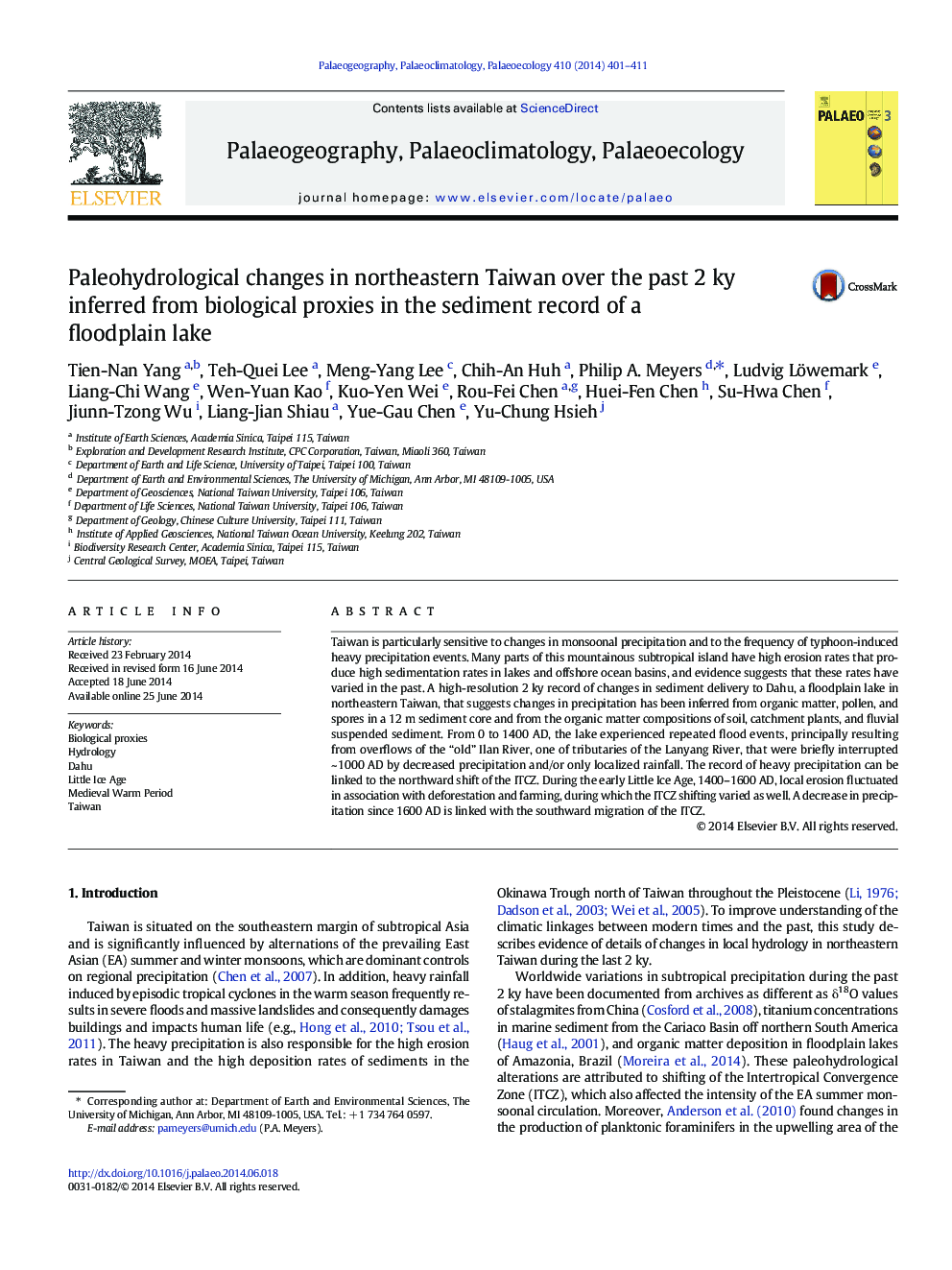| Article ID | Journal | Published Year | Pages | File Type |
|---|---|---|---|---|
| 4466135 | Palaeogeography, Palaeoclimatology, Palaeoecology | 2014 | 11 Pages |
•A Dahu sediment core captures a 2 ky record of paleoprecipitation in northern Taiwan.•Climate was wet until about 1400 AD and became drier during the Little Ice Age.•The climate of the last 400 years has been drier than the preceding 1600 years
Taiwan is particularly sensitive to changes in monsoonal precipitation and to the frequency of typhoon-induced heavy precipitation events. Many parts of this mountainous subtropical island have high erosion rates that produce high sedimentation rates in lakes and offshore ocean basins, and evidence suggests that these rates have varied in the past. A high-resolution 2 ky record of changes in sediment delivery to Dahu, a floodplain lake in northeastern Taiwan, that suggests changes in precipitation has been inferred from organic matter, pollen, and spores in a 12 m sediment core and from the organic matter compositions of soil, catchment plants, and fluvial suspended sediment. From 0 to 1400 AD, the lake experienced repeated flood events, principally resulting from overflows of the “old” Ilan River, one of tributaries of the Lanyang River, that were briefly interrupted ~ 1000 AD by decreased precipitation and/or only localized rainfall. The record of heavy precipitation can be linked to the northward shift of the ITCZ. During the early Little Ice Age, 1400–1600 AD, local erosion fluctuated in association with deforestation and farming, during which the ITCZ shifting varied as well. A decrease in precipitation since 1600 AD is linked with the southward migration of the ITCZ.
